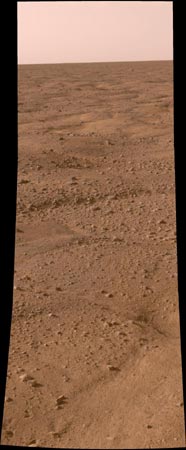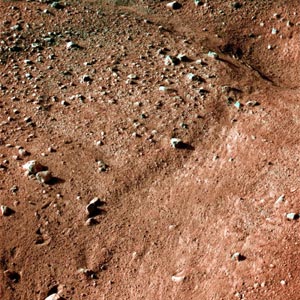News, May 2008
Archives
Mission & Name
Conflict Terminology
Editorials
Gaza Holocaust
Gulf War
Isdood
Islam
News
News Photos
Opinion Editorials
US Foreign Policy (Dr. El-Najjar's Articles)
www.aljazeerah.info
|
Editorial Note: The following news reports are summaries from original sources. They may also include corrections of Arabic names and political terminology. Comments are in parentheses. |
|
Phoenix probe sends 1st pictures from Mars' north pole
www.chinaview.cn
BEIJING, May 27 (Xinhuanet) -- In the most ambitious mission to date to find life-sustaining minerals on the Red Planet, NASA's Phoenix Mars probe sent back never-before-seen pictures of Mars' north pole Monday, media reported Tuesday. The pictures from the probe confirmed that the solar arrays needed for the mission's energy supply had unfolded properly, as the craft's batteries would have run out in about 30 hours. The photos also showed masts for the stereo camera and weather station had swung into vertical position as planned, and showed the spacecraft's footpad planted on the dusty surface as well as polygonal patterns on the ground that looked similar to icy arctic regions on Earth.
The flat Martian valley floor is expected to have water-rich permafrost within reach of the lander's robotic arm. "We can see cracks in the troughs that make us think the ice is still modifying the surface," said Peter Smith, a lead scientist on the project. "We see fresh cracks. Cracks can't be old. They would fill in," he said. "I'm floored. I'm absolutely floored," said Phoenix Project manager Barry Goldstein of NASA's Jet Propulsion Laboratory in Pasadena, California, as he reviewed the dramatic images. (Agencies) NASA says Phoenix lander's arm delayed to move www.chinaview.cn 2008-05-28 05:35:05 WASHINGTON, May 27 (Xinhua) -- U.S. Phoenix lander's arm movement and other activities scheduled on its second day on Mars are delayed because NASA's Mars Reconnaissance Orbiter flying over mars failed to relay commands from the Earth, the U.S. space agency reported Tuesday. NASA engineers sent commands for moving the lander's robotic arm on Tuesday morning, to the orbiter for relay to Phoenix. However, the orbiter did not relay those commands to the lander due to a glitch, said NASA's mission updates. Now, the Phoenix team has decided to delay the arm movement into Wednesday. It will try to move its crucial arm, unlatch its wrist and then flex its elbow for the first time after the successful landing on Sunday. The Mars orbiter's communication-relay system is in a standby mode. NASA's another orbiter, Mars Odyssey, is available for relaying communications between Earth and Phoenix. Mission scientists are eager to move Phoenix's arm, for that arm will deliver samples of icy terrain to their instruments made to study this unexplored Martian environment. During the next three months, the arm will dig into soil near the lander and deliver samples of soil and ice to laboratory instruments on the lander deck. Editor: Mu Xuequan |
Fair Use Notice
This site contains copyrighted material the use of which has not always been specifically authorized by the copyright owner. We are making such material available in our efforts to advance understanding of environmental, political, human rights, economic, democracy, scientific, and social justice issues, etc. We believe this constitutes a 'fair use' of any such copyrighted material as provided for in section 107 of the US Copyright Law. In accordance with Title 17 U.S.C. Section 107, the material on this site is distributed without profit to those who have expressed a prior interest in receiving the included information for research and educational purposes. For more information go to: http://www.law.cornell.edu/uscode/17/107.shtml. If you wish to use copyrighted material from this site for purposes of your own that go beyond 'fair use', you must obtain permission from the copyright owner.
|
|
|
|
||
|
||||||





